As a drone pilot with a decade of experience and the founder of Skykam, the nation’s largest drone company in the UK, I am often asked whether drones can fly in windy conditions.
Based out of Scotland, I am no stranger to strong winds while flying drones, as we frequently operate offshore in the North Sea where powerful gusts are common.
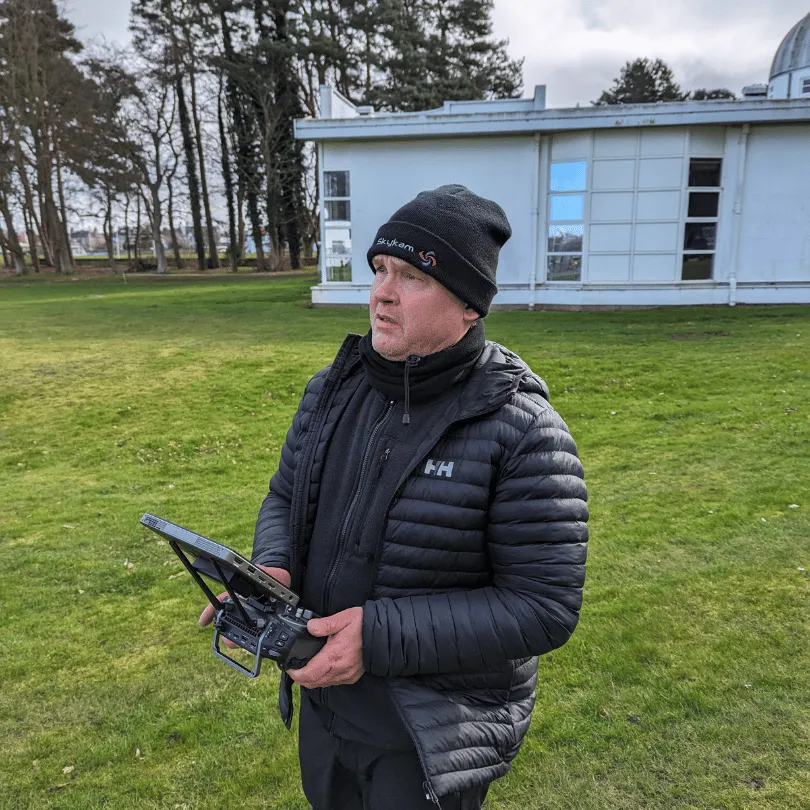
Knowing what level of wind your drone can handle and how to mitigate strong gusts is essential to becoming a successful drone pilot.
By the end of this article, you will have a better understanding of the limitations and capabilities of drones in windy conditions, empowering you to make informed decisions when flying in less-than-ideal weather.
Mastering the ability to fly in various wind conditions is a key skill that will set you apart as a competent and versatile drone pilot.
Jamies’ Quick Answer
Yes, drones can fly in the wind, but their ability to do so depends on factors such as the drone’s design, weight, and the strength of the wind. As a general rule, drones can safely fly in winds up to two-thirds of their maximum speed, so it’s crucial to understand your drone’s capabilities and monitor wind conditions before flying.
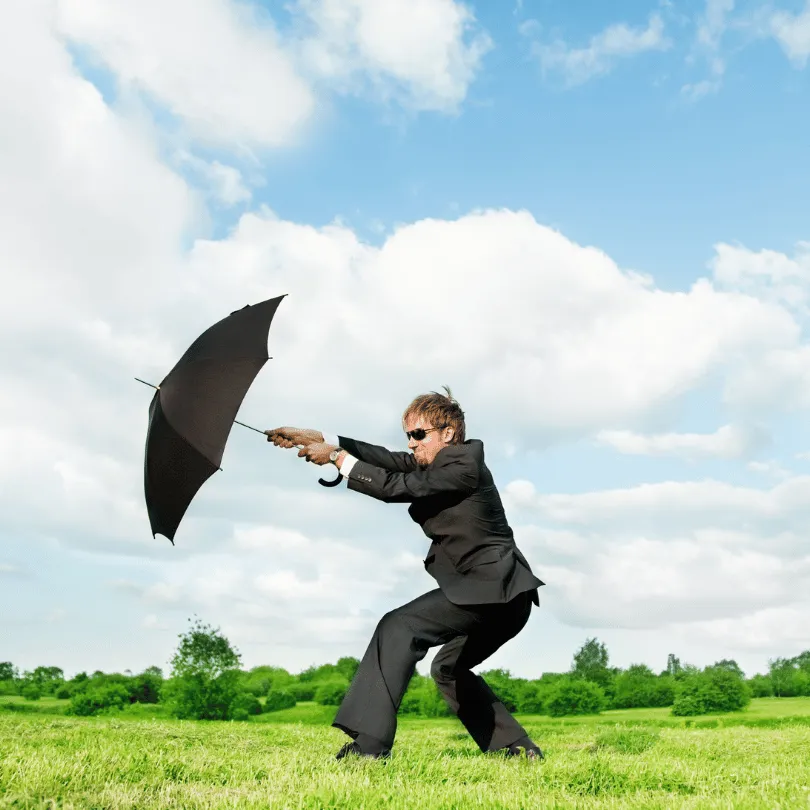
Understanding Drone Wind Resistance Levels
One of the most important things to know is how well your drone can handle windy conditions. This is where drone wind resistance levels come in.
These levels are represented by numbers, from 0 to 12, and they tell you the strongest wind your drone can safely fly in.
Think of it like a scale that measures how much wind your drone can deal with before it starts to have trouble flying smoothly. The higher the wind resistance level, the stronger the wind your drone can handle without losing control or stability.
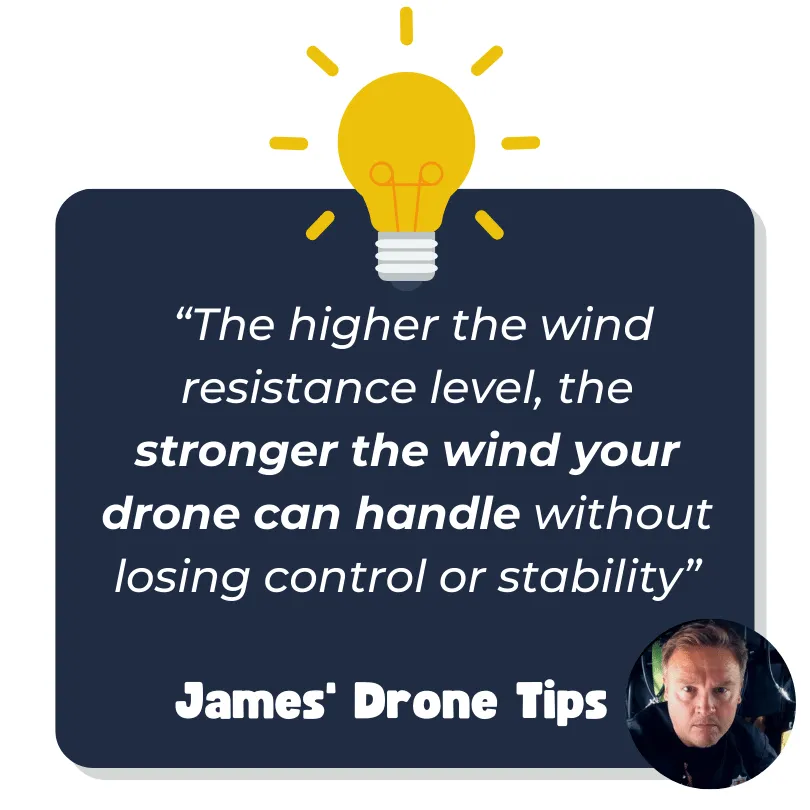
Knowing your drone’s wind resistance level is super important because it helps you decide if it’s okay to fly on a windy day. If the wind is too strong for your drone to handle, it’s best to keep it on the ground to avoid crashes or accidents.
Believe it or not, the idea of measuring wind levels has been around since way back in 1794!
Francis Beaufort came up with a scale that looked at how the wind affected things like leaves, branches, and waves. He used this to create different categories for wind strength.
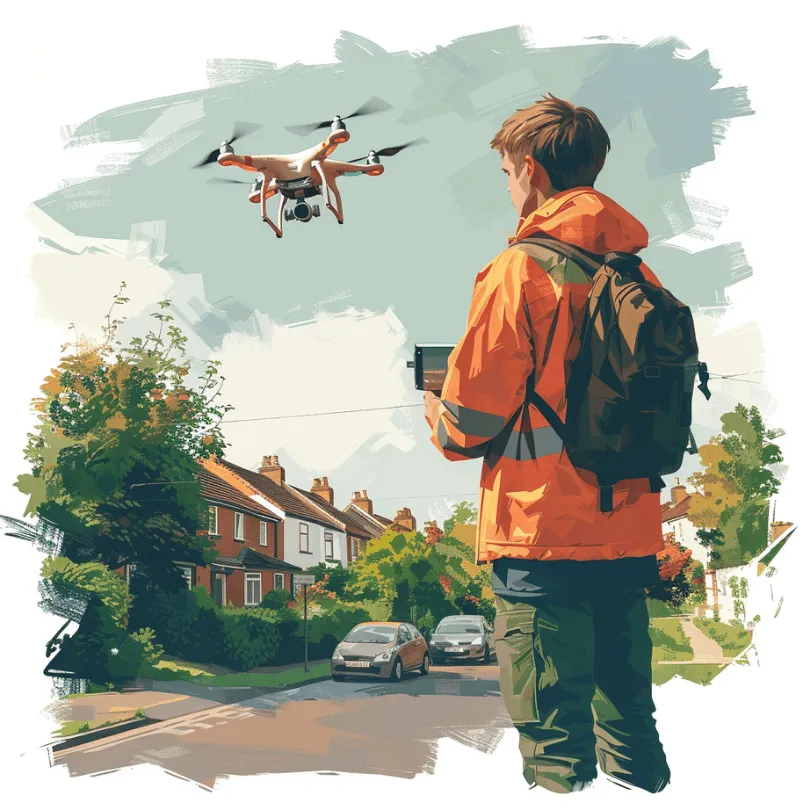
Beaufort Scale And Flying A Drone In The Wind
Each level on the scale corresponds to a specific wind speed range and its impact on the environment.
By matching drone wind resistance levels to these Beaufort categories, pilots can easily determine how well their drones can handle various wind conditions.
| Level | Speed (mph) | Description | Drone Behaviour |
|---|---|---|---|
| 0 | 0-1 | Calm | Perfect conditions for any drone, even those with low wind resistance. |
| 1 | 1-3 | Light Air | Most drones should be able to handle these conditions without problems. |
| 2 | 4-7 | Light Breeze | Some smaller, lightweight drones might start to struggle, while others remain stable. |
| 3 | 8-12 | Gentle Breeze | The limit for many consumer drones. Pilots should exercise caution, particularly with lightweight or less powerful drones. |
| 4 | 13-18 | Moderate Breeze | Only drones with high wind resistance should be flown. Control and stability might start to be affected. |
| 5 | 19-24 | Fresh Breeze | Drones with very high wind resistance may still fly, but expect decreased control and possible rapid battery drain. |
| 6 | 25-31 | Strong Breeze | Most consumer drones should not be flown. Only professional-grade drones with extremely high wind resistance can handle these conditions. |
| 7 | 32-38 | Near Gale | Flying a drone is generally not recommended. Risk of losing control is high. |
| 8 | 39-46 | Gale | No drone flight should be attempted under these conditions. |
| 9 | 47-54 | Severe Gale | Flying a drone is dangerous and could result in the loss or destruction of the drone. |
| 10 | 55-63 | Storm | No drone flight should be attempted under these conditions. |
| 11 | 64-72 | Violent Storm | No drone flight should be attempted under these conditions. |
| 12 | 72-83 | Hurricane | No drone flight should be attempted under these conditions. |
Please remember, these are only general guidelines. Always check your specific drone’s specifications and recommendations, and consider your personal piloting skills before flying a drone in windy conditions. Safety should always be a top priority.
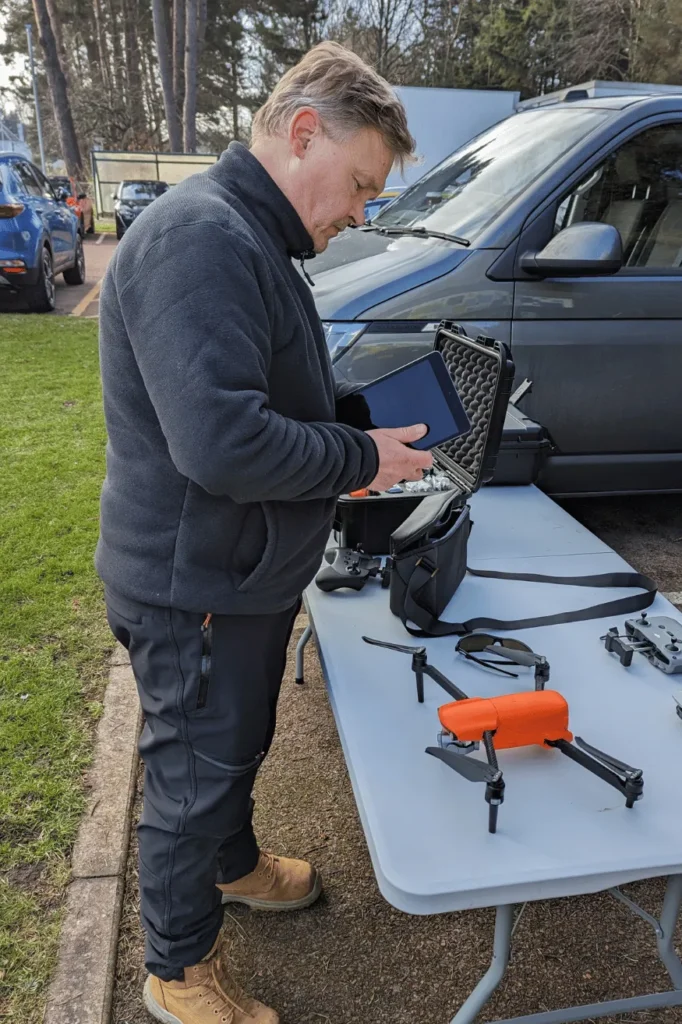
How To Figure Out Your Drones Wind Resistance Level
Most drones do not have an obvious Beaufort scale level on them.
Instead, you will have to look inside the drone’s manual. Inside the manual, look for the drone’s ‘Wind Speed Resistance’.
For example, the DJI Mini 4 Pro manual states that it has a wind resistance of 10.7 m/s. To figure out the resistance in miles per hour you will need to convert it.
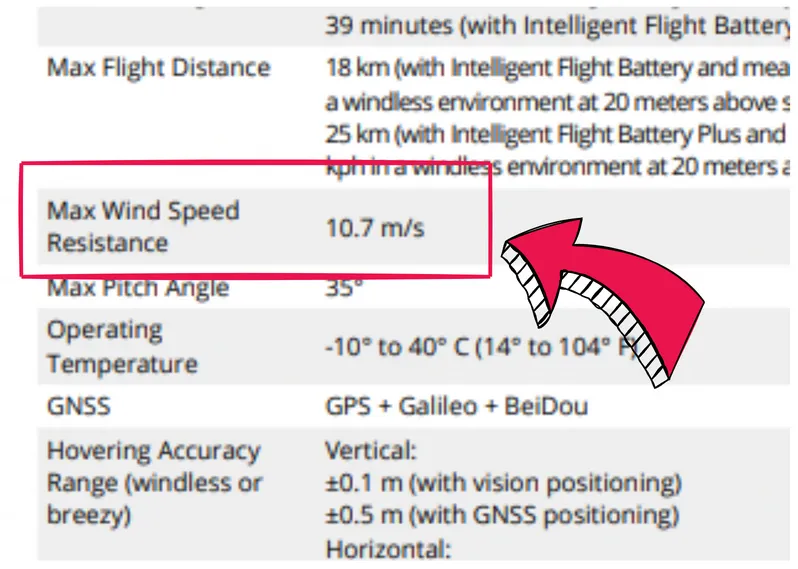
To convert from meters per second (m/s) to miles per hour (mph), you can use the following conversion factor:
1 m/s ≈ 2.23694 mph
So, to convert 10.7 m/s to mph, you can multiply 10.7 by 2.23694:
10.7 m/s × 2.23694 mph/m/s ≈ 23.9 mph
This conversion factor comes from the fact that:
1 mile = 1609.344 meters
1 hour = 3600 seconds
Therefore, 1 mph = 1609.344 meters / 3600 seconds ≈ 0.44704 m/s
And conversely, 1 m/s = 1 / 0.44704 mph ≈ 2.23694 mph
So, by multiplying the wind speed in m/s by 2.23694, you can obtain the equivalent wind speed in mph.
Once you have the wind speed resistance in mph, you can compare it to the Beaufort Scale to determine the level of wind conditions your drone can handle.
If the maximum wind speed resistance of your drone is 10.7 m/s, that is equivalent to approximately 23.9 mph.
According to the Beaufort Scale, this falls into the upper range of Level 4 (Moderate Breeze) and the lower range of Level 5 (Fresh Breeze).
At Level 4 (13-18 mph), only drones with high wind resistance should be flown, and pilots should expect some impact on control and stability.
At Level 5 (19-24 mph), drones with very high wind resistance may still be able to fly, but there will be decreased control and possibly rapid battery drain.
Given that 23.9 mph is near the upper limit of Level 5, the mini 4 pro drone should be able to handle wind conditions up to a Fresh Breeze, but flying in these conditions is not recommended unless your drone is specifically designed for high wind resistance.
It’s important to exercise caution and be prepared for decreased control and stability, as well as potential impacts on battery life.
To save you the hassle I have calculated all the main drones on the market below.
Consumer Drones Ability To Fly In Wind:
| Drone Model | Wind Resistance Level | Max Wind Speed | Can It Fly in The Wind? | Wind Conditions it Can Fly In |
|---|---|---|---|---|
| DJI Mavic Mini | Level 4 | 13‑18 mph (20‑28 kph) | Yes | Light to Moderate Breeze |
| DJI Spark | Level 4 | 13‑18 mph (20‑28 kph) | Yes | Light to Moderate Breeze |
| DJI Mavic 3 | Level 5 | 19-24 mph (29-38 kph) | Yes | Moderate to Fresh Breeze |
| DJI Mini 3 Pro | Level 5 | 19-24 mph (29-38 kph) | Yes | Moderate to Fresh Breeze |
| DJI Mavic Mini 2 | Level 5 | 19-24 mph (29-38 kph) | Yes | Moderate to Fresh Breeze |
| DJI Mavic Air 2 | Level 5 | 19-24 mph (29-38 kph) | Yes | Moderate to Fresh Breeze |
| DJI Mavic Air 2s | Level 5 | 19-24 mph (29-38 kph) | Yes | Moderate to Fresh Breeze |
| DJI Mavic 2 | Level 5 | 19-24 mph (29-38 kph) | Yes | Moderate to Fresh Breeze |
| DJI Mavic 2 Pro | Level 5 | 19-24 mph (29-38 kph) | Yes | Moderate to Fresh Breeze |
| DJI Mavic 2 Zoom | Level 5 | 19-24 mph (29-38 kph) | Yes | Moderate to Fresh Breeze |
| DJI Phantom 4 Pro | Level 5 | 19-24 mph (29-38 kph) | Yes | Moderate to Fresh Breeze |
| DJI Mavic Air | Level 5 | 19-24 mph (29-38 kph) | Yes | Moderate to Fresh Breeze |
| DJI Mavic Pro Platinum | Level 5 | 19-24 mph (29-38 kph) | Yes | Moderate to Fresh Breeze |
| DJI Phantom 4 Advanced | Level 5 | 19-24 mph (29-38 kph) | Yes | Moderate to Fresh Breeze |
| DJI Mavic Pro | Level 5 | 19-24 mph (29-38 kph) | Yes | Moderate to Fresh Breeze |
| DJI Inspire | Level 5 | 19-24 mph (29-38 kph) | Yes | Moderate to Fresh Breeze |
| Phantom 4 Pro V2.0 | Level 5 | 19-24 mph (29-38 kph) | Yes | Moderate to Fresh Breeze |
| DJI Phantom 4 RTK | Level 5 | 19-24 mph (29-38 kph) | Yes | Moderate to Fresh Breeze |
| DJI Matrice 300 RTX | Level 7 | 33 mph (53 kph) | Yes | Up to Near Gale |
| Yuneec Mantis G | Level 6 | 29 mph (48 kph) | Yes | Strong Breeze |
| Yuneec Mantis Q | Level 6 | 29 mph (48 kph) | Yes | Strong Breeze |
| Autel Evo 1 | Level 8 | 46 mph (74 kph) | Yes | Up to Gale |
| Autel Evo 2 | Level 8 | 46 mph (74 kph) | Yes | Up to Gale |
| Autel Evo 2 Pro | Level 8 | 38 mph (62 kph) | Yes | Up to Gale |
Always consider your skill, the flight conditions, and the manufacturer’s guidelines before flying, as wind resistance is just one safety factor.
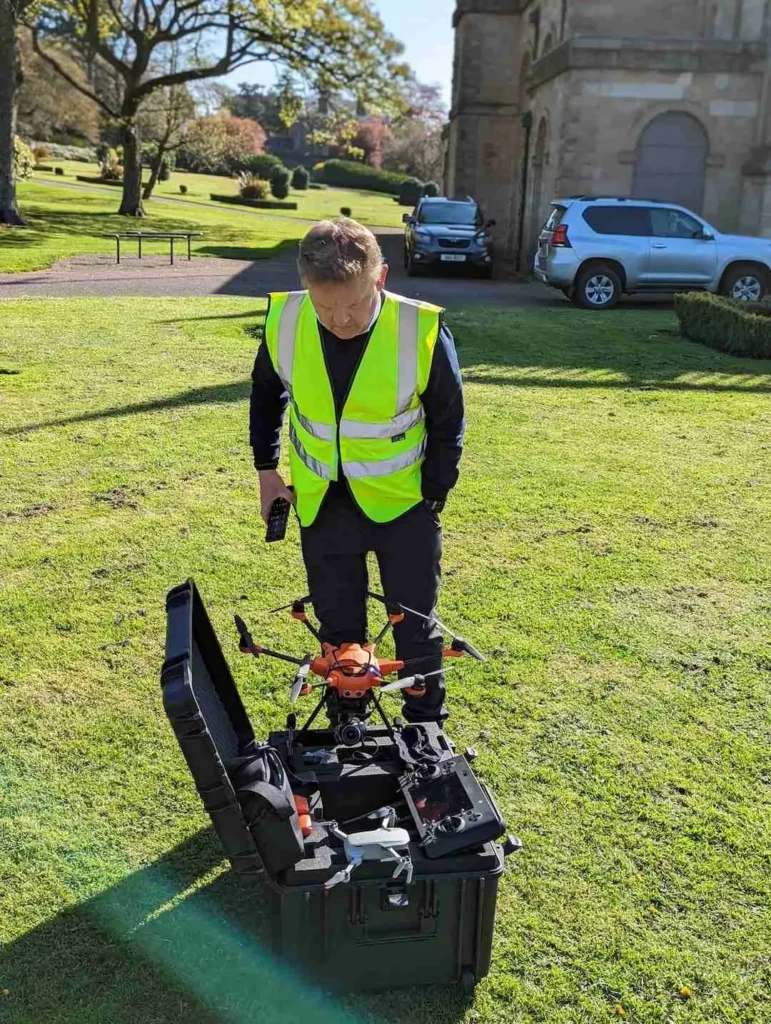
How To Fly A Drone On A Windy Day
Flying a drone when it’s windy outside can be pretty tricky, but it’s definitely possible if you know what you’re doing.
When the wind is strong, you need to pay extra attention to how fast it’s going, which direction it’s coming from, and if there are any sudden gusts or changes in the wind.
Despite the challenges, flying in windy conditions can lead to unique and valuable footage.
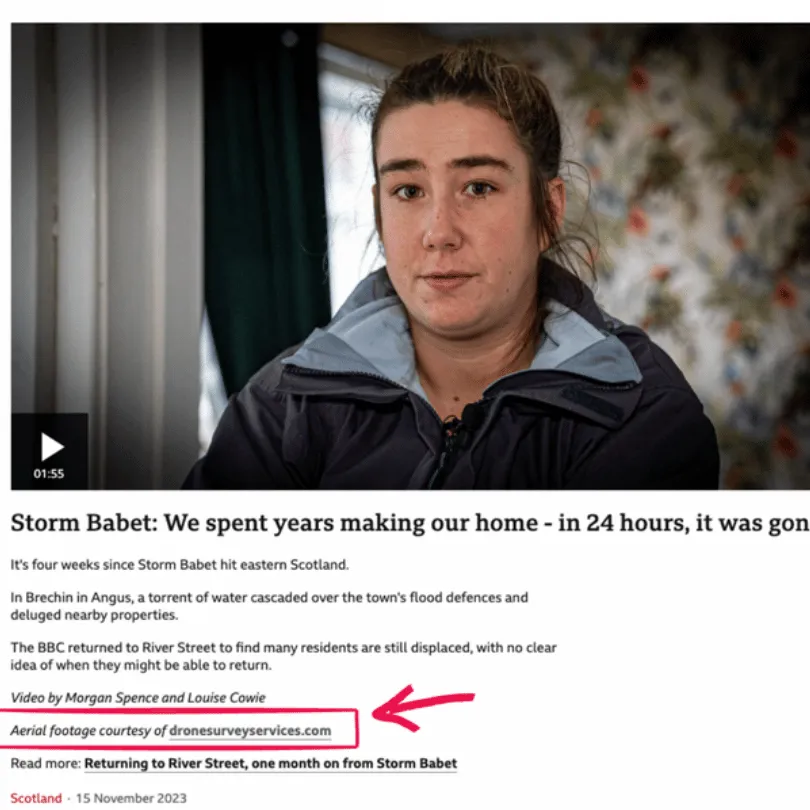
In 2023, a big storm called Storm Babet hit the United Kingdom with intense winds and a lot of flooding. It was a major weather event that caused a lot of damage.
The news companies wanted to get some shots of the storm from the air, so they gave their reporters these drones called DJI Mini 3 Pros to fly around and get footage.
But here’s the thing.
Flying a drone in heavy wind conditions is really hard!
The reporters didn’t have much experience flying drones, and they couldn’t stay in the air for very long because of the wind. It was just too tricky for them to handle.
That’s where my company came in. We were the only drone company that was able to get up in the air and film the storm while it was happening.
Because we could handle the strong winds, we got some really unique and amazing footage of Storm Babet that nobody else could get.
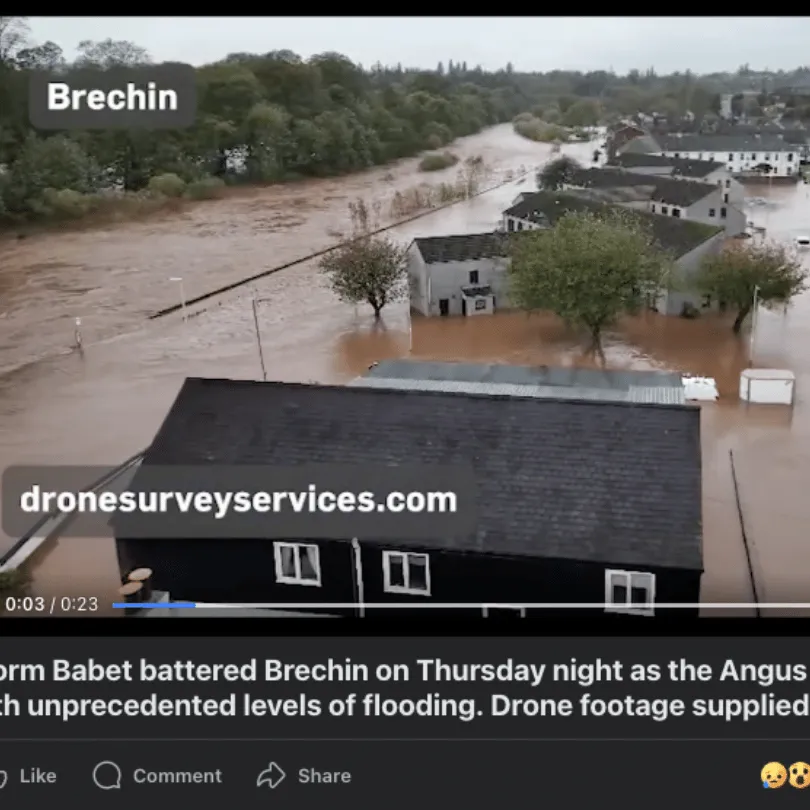
In the end, all the big news networks wanted to use our footage in their reports about the storm. They showed our video clips on TV and online because it was the only way for people to see what the storm looked like from above.
This was a huge deal for our company because it meant that millions of people got to see our work. It was like free advertising for us, and it helped us become even more well-known and respected in the drone industry.
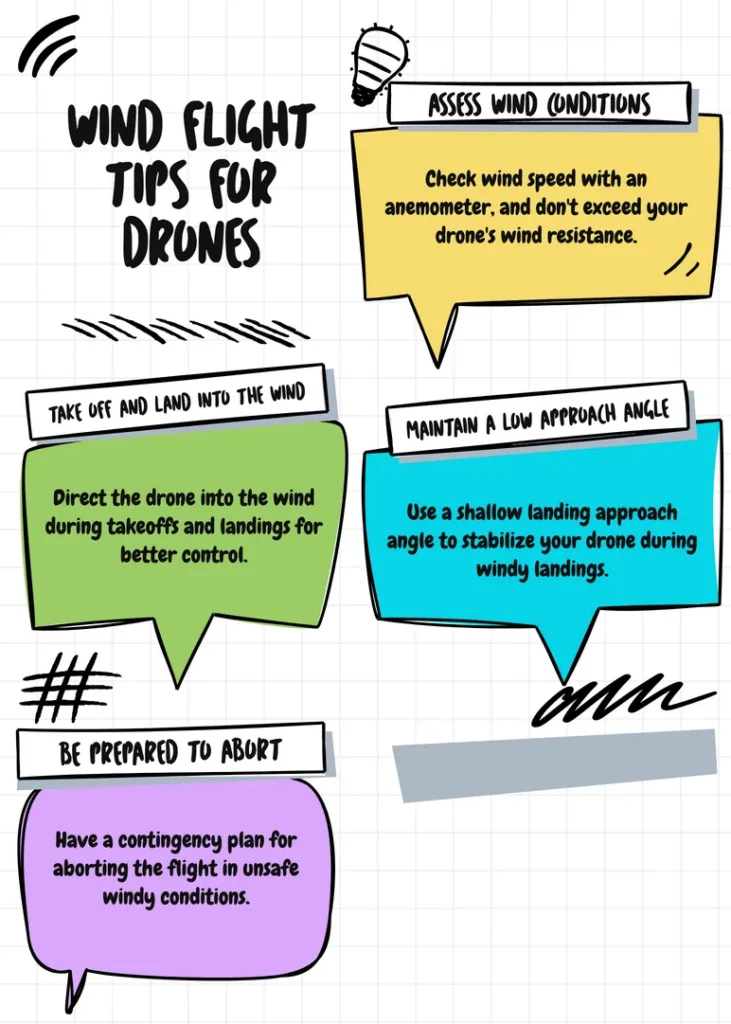
My Tips On How To Fly A Drone In Windy Conditions
You know what the hardest part about flying a drone in the wind is?
It’s not actually flying it around in the air – it’s taking off and landing!
That’s when your drone is most likely to crash, trust me, I’ve been there. The wind can really mess with your drone’s stability and control when you’re trying to get it off the ground or bring it back down.
It’s like trying to balance on a tightrope in a windstorm – not easy!
But don’t worry, I’ve got some tips and tricks up my sleeve that I use to make sure my drone takes off and lands safely, even when it’s super windy outside.
Stick with me, and I’ll show you how to master the art of launching and landing your drone like a pro, no matter how hard the wind is blowing!
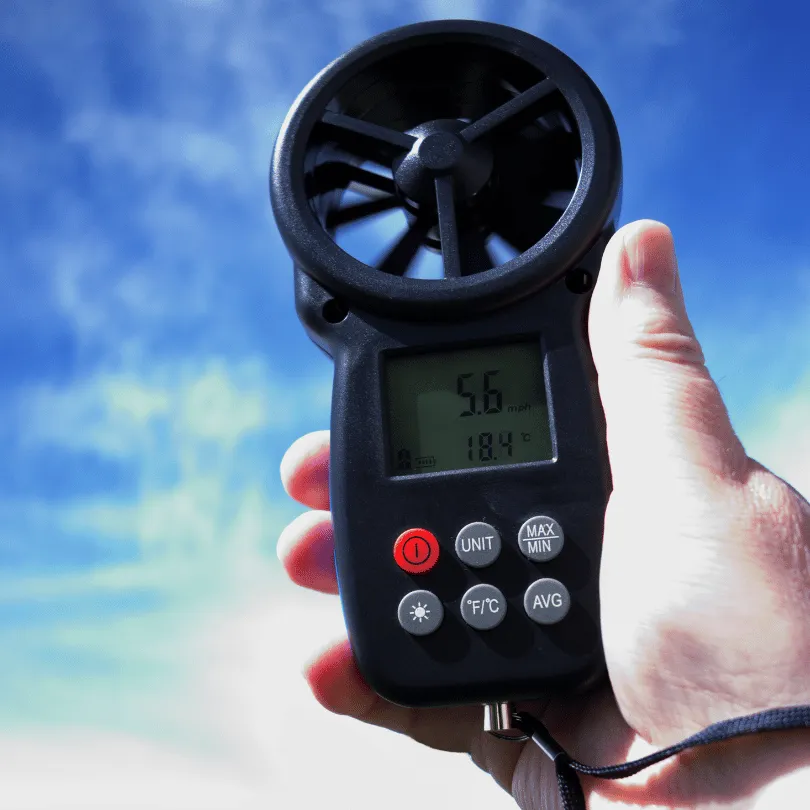
Assess Wind Conditions
Before I even think about taking off, I always whip out my trusty anemometer to check the wind speed. It doesn’t matter if I’ve already looked at the weather forecast – I like to get a real-time reading of the wind conditions right where I’m standing.
Trust me, it’s a smart move!
Here’s the deal: if the wind is blowing harder than your drone’s maximum wind resistance, it’s just not worth the risk.
Most drones can handle wind speeds between 10 and 15 meters per second, which is already pretty darn windy if you ask me!
Trying to fly in winds that are too strong is just asking for trouble. Your drone could get tossed around like a leaf in a hurricane, and before you know it, you might end up with a pile of broken parts instead of a drone.
So, my advice? Always check the wind speed with an anemometer and stick to flying in conditions that your drone can handle. It might mean waiting for a calmer day sometimes, but it’s better to be safe than sorry when it comes to your expensive flying machine!
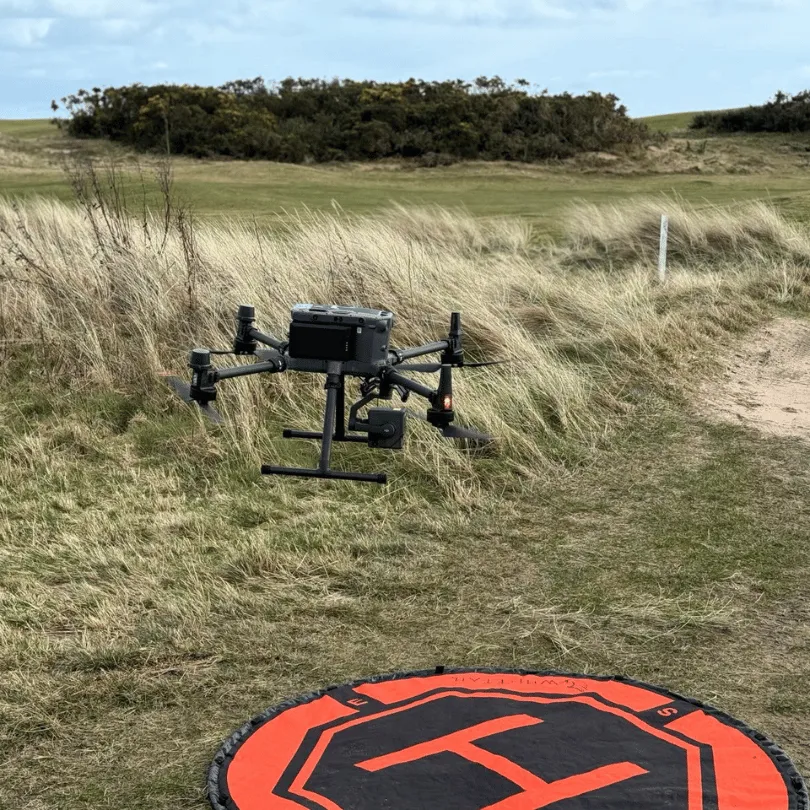
Take Off And Land Into The Wind
Alright, so you’ve checked the wind speed and you’re good to go. Now it’s time to talk about how to actually take off and land your drone when it’s windy.
Here’s the thing: taking off and landing are the most dangerous parts of flying a drone, period. It’s like riding a bike – you’re more likely to fall when you’re just starting or stopping than when you’re cruising along.
But don’t worry, there’s a trick to it!
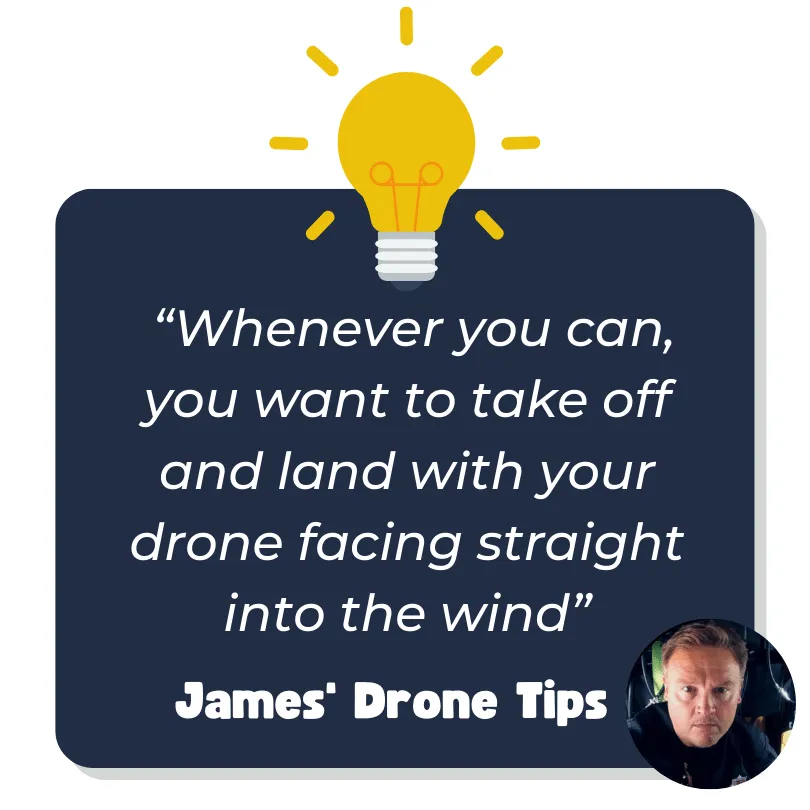
Whenever you can, you want to take off and land with your drone facing straight into the wind. It might seem a little counterintuitive at first, but trust me on this one.
When your drone is pointing into the wind, it can handle the gusts a lot better. The wind is hitting the front of your drone head-on, instead of pushing it from the sides or the back.
This helps your drone stay stable and maintain control, even when the wind is trying its best to push it around.
Think of it like a boat sailing into the waves – it’s a lot smoother and easier to handle than if the waves were hitting it from the side or behind.
The same goes for your drone!
So, next time you’re taking off or landing in the wind, remember: point that drone straight into the gusts and let it cut through the wind like a knife through butter.
It might feel a little scary at first, but it’s the best way to keep your drone steady and under control in the wind.
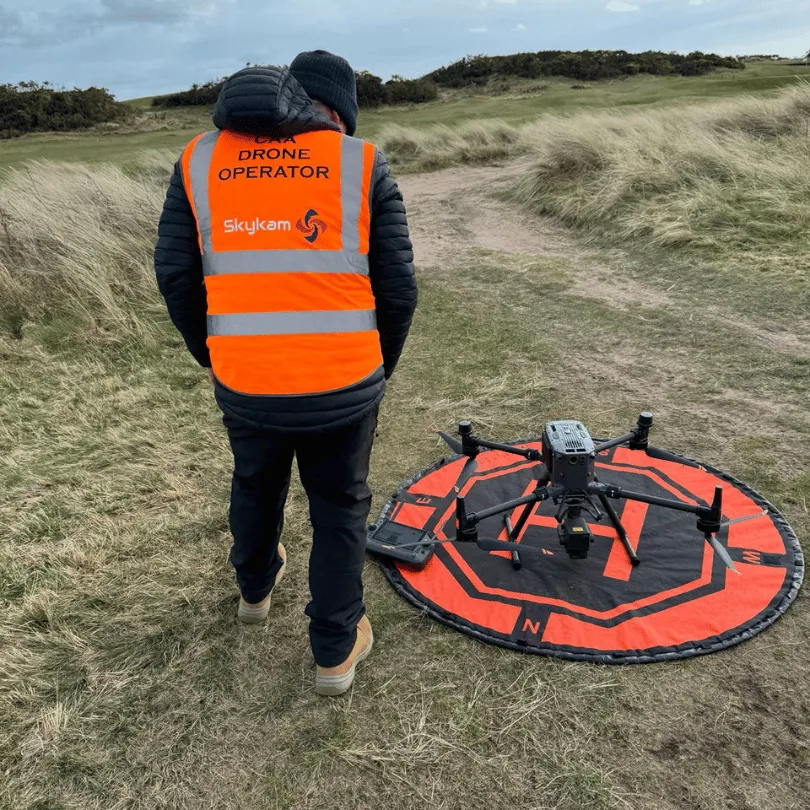
Have A Sturdy Landing Pad
Now, let’s talk about how to stick that landing when the wind is doing its best to throw you off course.
One of the best things you can do is to use a stable landing platform or pad.
When you’re trying to land your drone in the wind, the last thing you want is for it to touch down on uneven ground or get blown around as soon as it hits the dirt.
But if you’ve got a nice, sturdy landing pad, it can help absorb some of that wind impact and keep your drone nice and stable. It’s like giving your drone its own little helipad to come home to!
Personally, I swear by landing pads that have a weighted rim around the edge. It’s like having a built-in anchor that keeps the pad from sliding around or blowing away in the wind.
Plus, the bigger and heavier the pad, the better. It gives your drone a nice, solid foundation to land on, even when the wind is trying to push it every which way.
So, if you’ve got a landing pad handy, make sure to use it when you’re flying in windy conditions. It could be the difference between a smooth, stable landing and a rough, unpredictable one.
And if you don’t have a pad, try to find the flattest, most even ground you can to bring your drone back to earth. Every little bit helps when you’re trying to outsmart the wind!
Maintain A Low Approach Angle
When you’re landing your drone in the wind, you want to come in at a shallow angle.
Fly in at a 20% pitch or so.
Coming in at a low angle is like sneaking up on the landing pad. You’re giving your drone a chance to ease into the landing and maintain its stability, even if a rogue gust of wind tries to throw it off course.
Think of it like a plane coming in for a landing on a windy day. The pilot doesn’t just point the nose straight down and hope for the best, right?
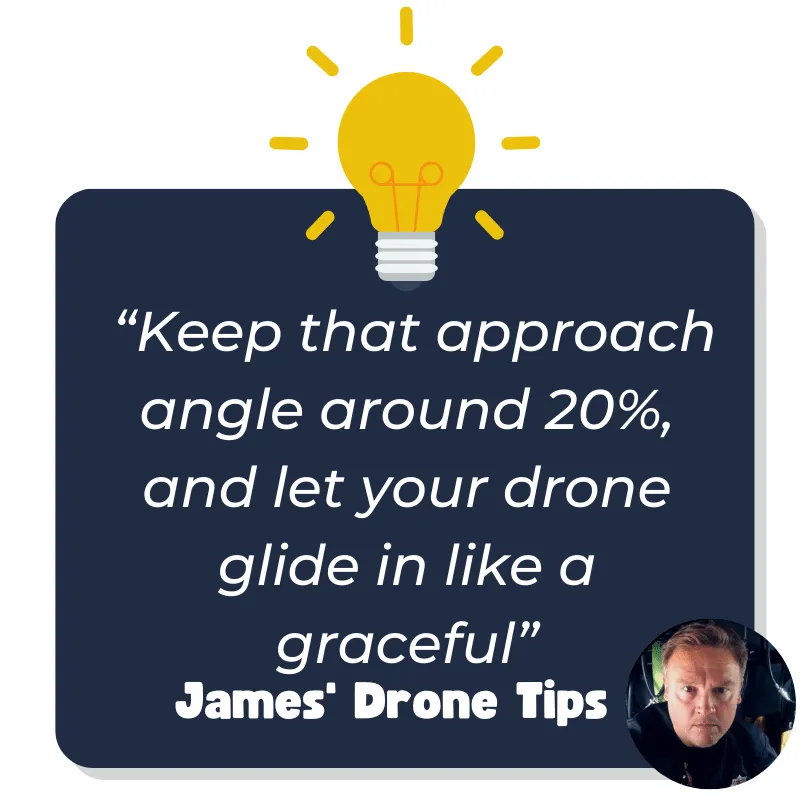
Nope, they come in nice and steady, using the plane’s aerodynamics to keep things under control.
The same goes for your drone.
By maintaining a low approach angle, you’re giving it the best chance to fight off any sudden gusts or shifts in the wind.
And here’s the thing – if a gust does happen to catch your drone at the last second, a low approach angle can help prevent it from getting flipped or rolled over.
So, next time you’re coming in for a landing in the wind, remember: low and slow is the way to go.
It might take a little practice, but once you get the hang of it, you’ll be nailing those windy landings like a pro!
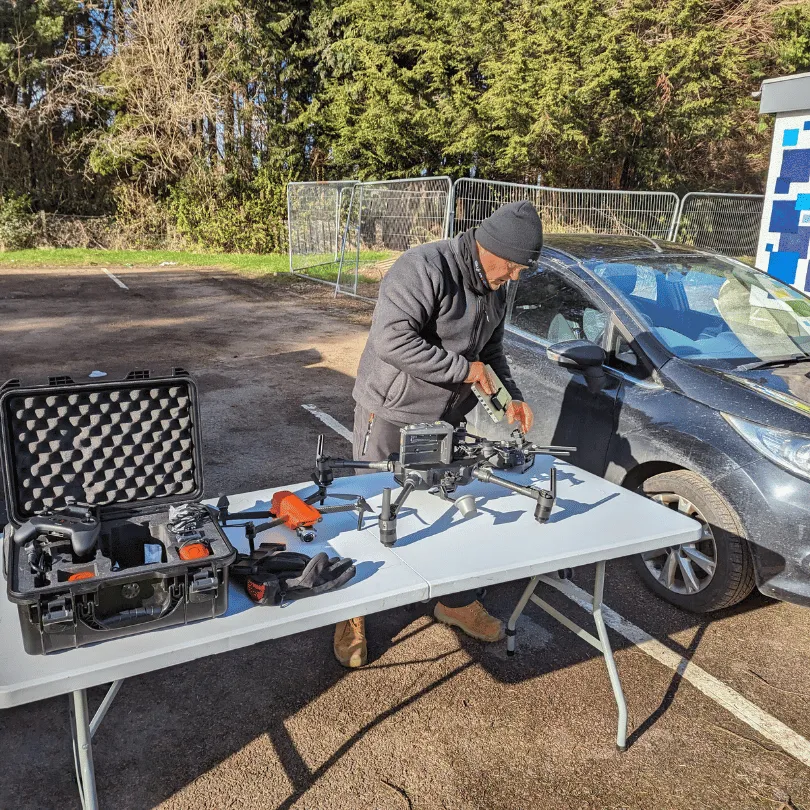
Use Position Hold Or Automated Landing
So we’ve covered the basics of landing your drone in the wind – using a landing pad, keeping that approach angle low, and all that good stuff.
But what if I told you there was a way to make it even easier?
Enter: position hold and automated landing features. These are like the secret weapons of drone pilots everywhere, especially when it comes to flying in windy conditions.
Basically, these modes use technology to help your drone stay stable and on course, even when the wind is trying to push it around.
So, how does it work?
Well, your drone is equipped with GPS, vision sensors, and some seriously smart algorithms that can detect and compensate for wind disturbances.
When you engage position hold or automated landing, your drone is constantly making tiny adjustments to its position and orientation to counteract the effects of the wind.
And the best part?
You don’t have to do a thing!
Just sit back, relax, and let your drone do its thing.
Now, I know what you might be thinking – isn’t that cheating? Doesn’t it take all the skill and challenge out of flying in the wind? And sure, I get that.
But here’s the thing – sometimes, it’s just smart to use all the tools at your disposal to make your life a little easier.
Plus, even with position hold and automated landing, you still need to know how to fly your drone properly and make good decisions.
It’s not a magic solution, but it’s a darn helpful one when the wind is doing its best to throw you off course.
So, next time you’re flying in windy conditions, don’t be afraid to give these features a try.
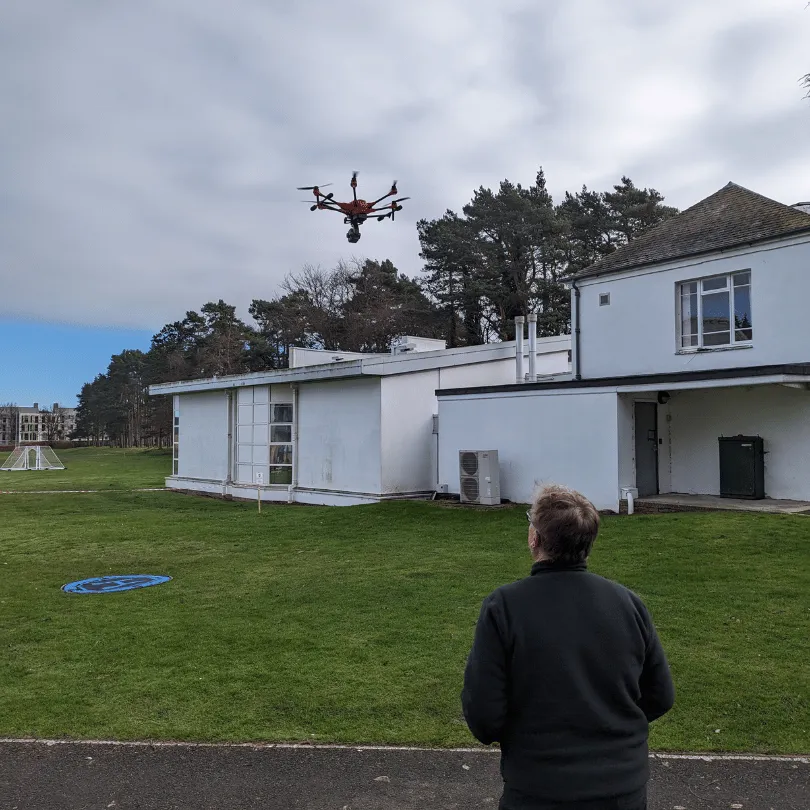
Be Prepared To Abort
Sometimes, despite your best efforts, the wind is just too strong. And when that happens, there’s only one thing to do: abort the mission!
I know, I know – it’s not the most exciting or heroic thing to do.
But trust me, it’s a whole lot better than risking a crash and ending up with a broken drone (and a broken heart).
So, how do you know when it’s time to pull the plug?
Well, if you’re trying to take off or land and your drone is just not having it – if it’s getting tossed around like a rag doll – that’s a pretty good sign that it’s time to call it quits.
And hey, there’s no shame in that!
Even the most experienced pilots have to abort a flight every now and then. It’s just part of the deal when you’re flying in challenging conditions.
The key is to be prepared for it.
Have a plan in place for what you’ll do if you need to abort, whether that’s finding a safer landing spot or just bringing your drone back to you and trying again later.
And most importantly, don’t let your ego get in the way.
I know it can be tempting to push through and try to make it work, even when the wind is fighting you every step of the way. But trust me, it’s not worth the risk.
At the end of the day, your drone is a machine – an expensive, delicate machine that needs to be treated with care and respect.
And sometimes, the best way to show that respect is to know when to say “enough is enough” and bring it back home safe and sound.
So, if you find yourself in a situation where the wind is just too much to handle, don’t hesitate to abort the flight and try again another day.
Your drone (and your wallet) will thank you for it in the long run!
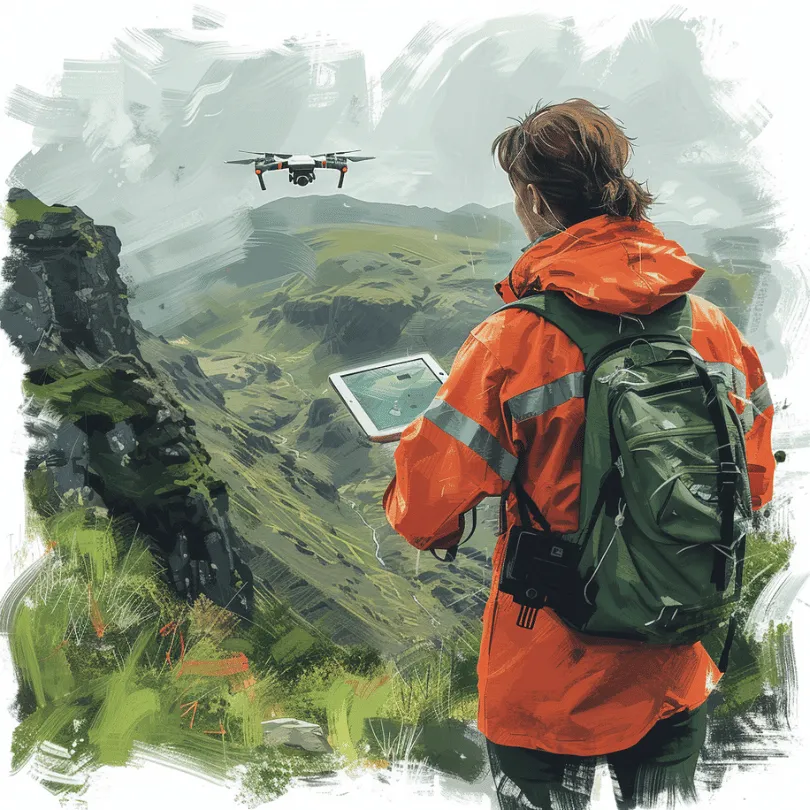
How Wind Affects Different Parts Of Drones
From battery life to flight control and even the quality of your footage, the wind can affect your drone in all sorts of ways – but don’t worry, we’re here to break it down for you!
Impact Of Wind On Drone Battery Life
When your drone is flying in the wind, it’s like trying to run uphill while wearing a heavy backpack – it’s gotta work a lot harder than usual! And just like how you’d get tired faster running uphill, your drone’s battery drains quicker when it’s fighting against the wind.
Think about it – when the wind is pushing against your drone, it has to use more power to stay on course and keep steady.
It’s like the drone is constantly battling against an invisible force trying to knock it off balance!
Plus, your drone is always making tiny adjustments to stay stable in the wind, kind of like how you might need to take smaller, quicker steps to keep your balance while walking on a slippery surface.
And just like how taking more steps uses more of your energy, these constant tweaks and adjustments use up more of your drone’s battery life.
So, if you’re flying in windy conditions, don’t be surprised if your drone’s battery drains faster than normal – it’s just working harder to fight the wind and stay in control.
Effect On Drone’s Payload And Lifting Capacity
If your drone is carrying any extra weight, like a camera or sensors, the wind can make it even harder for your drone to stay stable and fly smoothly.
Imagine your drone is like a weightlifter trying to carry a heavy barbell.
Now, imagine that weightlifter trying to do the same thing while standing on a balance beam in the middle of a windstorm – it’s gonna be a lot harder to keep steady and lift that weight!
The same thing happens with your drone. When it’s carrying a heavy payload, it has to work even harder to fight against the wind and keep everything stable.
It’s like the wind is trying to push the weight off balance and make your drone work twice as hard.
Impact On Video And Image Quality
Finally, the wind can also mess with the quality of the pictures and videos your drone takes. Even if your drone has built-in stabilization to help keep the camera steady, the wind can still cause some shaky footage.
The wind can cause your drone to move and shake in unpredictable ways, which can lead to footage that looks jittery or unstable.
And if you’re a professional drone photographer or videographer, this can be a big problem!
You might have to spend extra time editing and stabilizing the footage in post-processing, or you might even have to scrap some shots altogether if the wind made them too shaky to use.
So, while flying a drone in the wind can be a fun challenge, it’s important to keep in mind all the ways the wind can affect your drone’s performance and the quality of your footage.
But with a little knowledge and preparation, you can still get some amazing shots and have a blast flying, even in breezy conditions!
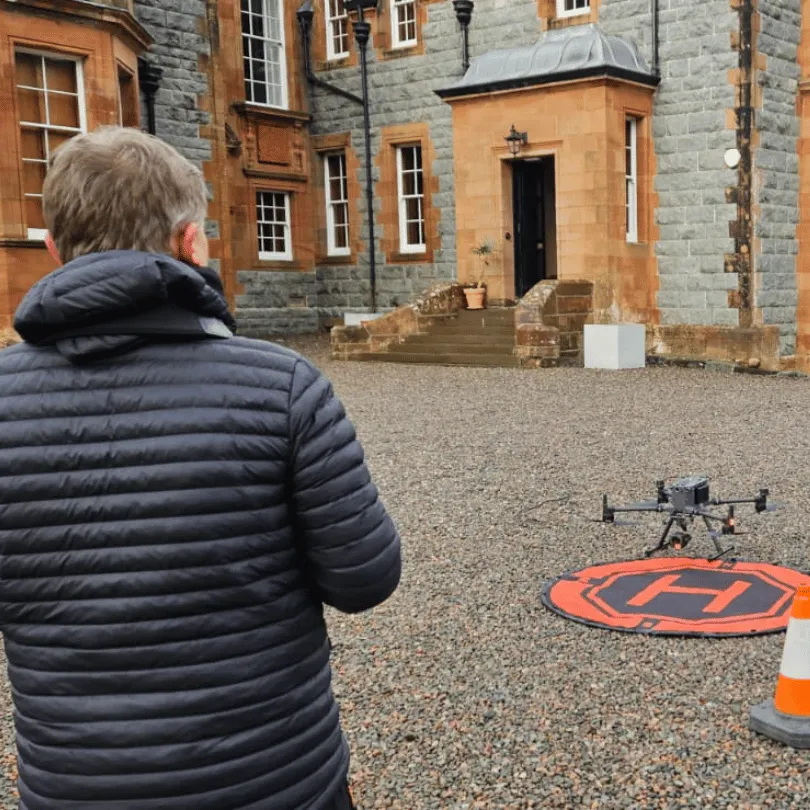
Factors That Decide A Drone’s Wind Resistance Level
When it comes to flying your drone in windy conditions, it’s not just about luck or skill – there are actually a bunch of factors that can affect how well your drone handles the wind. From the way your drone is designed to the size of its propellers, each piece of the puzzle can make a big difference in how your drone performs when the wind starts to pick up.
Let’s dive into some of the key things that can affect your drone’s wind resistance:
Drone Design
The way your drone is built can have a big impact on how it handles windy conditions. Some drones are designed with special features, like folding arms that can adjust during flight, to help them stay stable even when the wind is blowing.
Thrust-To-Weight Ratio
This is basically a fancy way of saying how much power your drone’s motors have compared to how heavy the drone is. If your drone has strong motors that can generate a lot of thrust, it’s going to be better at fighting against the wind and staying on course.
Aerodynamics
Just like how the shape of an airplane affects how it flies, the aerodynamics of your drone can play a big role in how it handles windy conditions. Drones that are designed to be more aerodynamic, with features that help them cut through the air more easily, are going to be better at staying stable in the wind.
Drone Weight
The weight of your drone can also make a difference in how it handles windy conditions. Heavier drones are generally going to be harder for the wind to push around, while lighter drones might get tossed around more easily.
Control Systems And Sensors
If your drone has fancy control systems and sensors, it can actually help it adjust to windy conditions on the fly. These high-tech features can help your drone automatically compensate for the wind and stay on course, even when things get breezy.
Propeller Size And Efficiency
Finally, the size and efficiency of your drone’s propellers can also affect how well it handles windy conditions. Bigger or more efficient propellers can help generate more lift and stability, making it easier for your drone to stay in control when the wind picks up.
So, while there’s no one-size-fits-all solution for flying your drone in windy conditions, understanding these key factors can help you choose the right drone and make smart decisions when you’re out flying.
And remember, safety should always be your top priority – if the wind is too strong or you’re not sure if your drone can handle it, it’s always better to err on the side of caution and keep your feet on the ground.
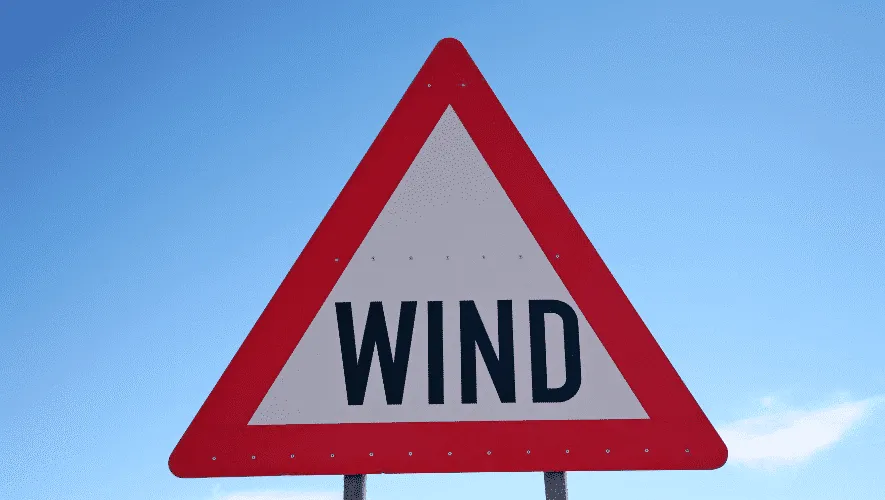
Conclusion
So, can drones fly in wind? Yes, they can, but it depends on several factors such as wind speed, drone specifications, and design.
Understanding these factors is crucial for any drone pilot who wants to fly in windy conditions successfully.
Some drones are specifically designed to withstand strong winds, while others may struggle, and it’s essential to know the capabilities of your drone before attempting to fly in windy conditions.
Flying a drone in windy conditions can be challenging, but it’s not impossible. With proper planning, preparation, and knowledge, you can fly your drone safely and capture some stunning footage.
Always remember to check the weather forecast, choose the right drone for the job, and take all necessary precautions to avoid accidents. By following these tips and utilizing the latest drone technology that can withstand strong winds, you can take your drone flying experience to new heights.
![Can Drones Fly In The Wind? [year] 2 can you fly a drone in the wind](https://skykam.co.uk/wp-content/uploads/2024/04/can-you-fly-a-drone-in-the-wind.webp)
Thanks for posting this article James – it’s an incredibly useful and helpful piece of work. Appreciate you taking the time to do it.